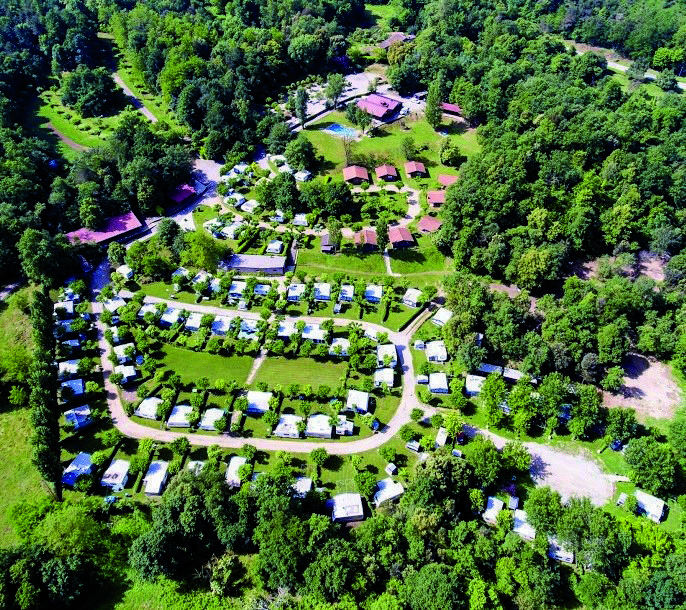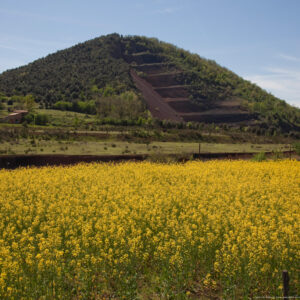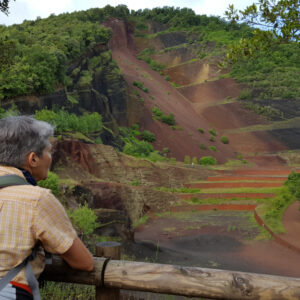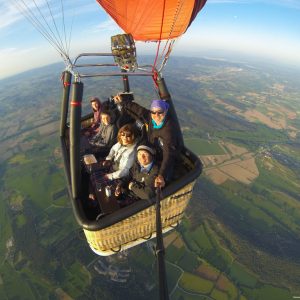We love being at one with nature, exploring the region, and having fun. Therefore, the Girona Campsites recommends a new option for when you have the time: exploring the Garrotxa volcanic zone’s most impressive volcanoes.
This article highlights three of the most stunning volcanoes nestled in the Garrotxa Nature Reserve, which features the Iberian Peninsula’s most important volcanic landscape and is home to 40 volcanic cones and more than 20 lava flows.
Before beginning this tour, we’d like to show you this stunning video of the Garrotxa Nature Reserve, filmed by the Costa Brava Girona Tourism Board.

The charming town of Santa Pau is home to some of the Garrotxa Nature Reserve’s finest scenery, with beautiful landscape, the idyllic chapel located in the centre of the crater, and the adrenaline of walking on the summit of a volcano. The records reveal that the 700 m high Santa Margarita Volcano erupted over 11,000 years ago and has been dormant ever since. A sweeping green plain covers the crater, with a traditional Romanesque church – Santa Margarita del Clot – sitting impressively in the centre.
To reach the Santa Margarita Volcano, visitors must embark on a pleasant 30-minute walk from the nearest car park. Either follow the route below or explore other paths.

Near the Santa Margarita Volcano lies Croscat, another of the most famous volcanoes in the Garrotxa volcanic zone. It’s one of the youngest volcanoes in the park. Estimates suggest the last eruption was around 11,000 years ago. One of this volcano’s striking features is the horseshoe-shaped crater, sculpted by lava during Croscat’s multiple eruptions. The 6 km of lava flow and the pits formed around the volcano are also impressive. From the top, visitors can see the remains of a defence tower, now converted into a communications tower.
Another of this volcano’s unique characteristics is the cut in a part of the mountain, from mining operations in the past that were halted following social protests. This cut affords an insight into a volcano’s inner structure.
Here’s the path from Can Xel, which offers a pleasant stroll to the Croscat Volcano. The Garrotxa Tourism Board recommends a guided tour and asks that visitors fully respect the environment, which is part of a protected Nature Reserve.

Montsacopa is another of the most famous volcanoes in the Garrotxa area due to its proximity to the city of Olot and the stunning views of the Garrotxa Nature Reserve. Estimates suggest it erupted over 100,000 years ago, and the almost perfectly round shape of its crater is unique in the whole park, the result of less explosive and violent eruptions.
Some interesting trivia about this imposing volcano include that it was walled during the French War and the chalk quarry next to it, which helped to build a great part of the buildings in Olot.
If you want to visit, here’s a simple excursion for marvelling at Croscat’s magnificent views.
Now you’ve seen some of the Garrotxa Nature Reserve’s most impressive volcanoes, it’s time to explore an excellent option offering a different perspective on the area.
Want to fly like a bird? Girona Campsites recommends, if you have the chance, taking a trip in a hot-air balloon in the Garrotxa volcanic zone. The region’s volcanic vastness is best witnessed from above.

We hope you’ve enjoyed reading our latest article about the Garrotxa volcanic zone, and hope you can soon come and enjoy this beautiful local scenery.
See you soon!